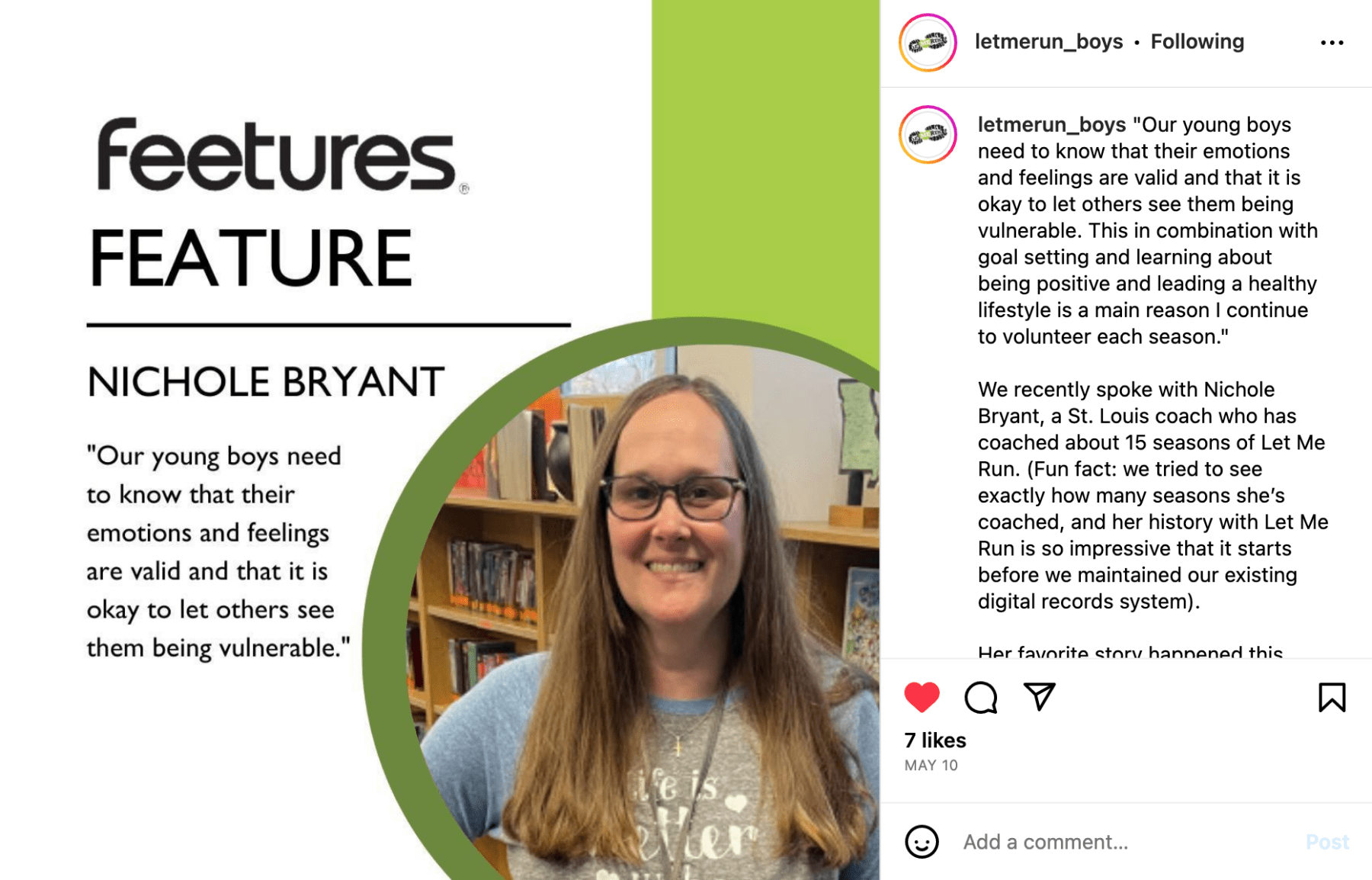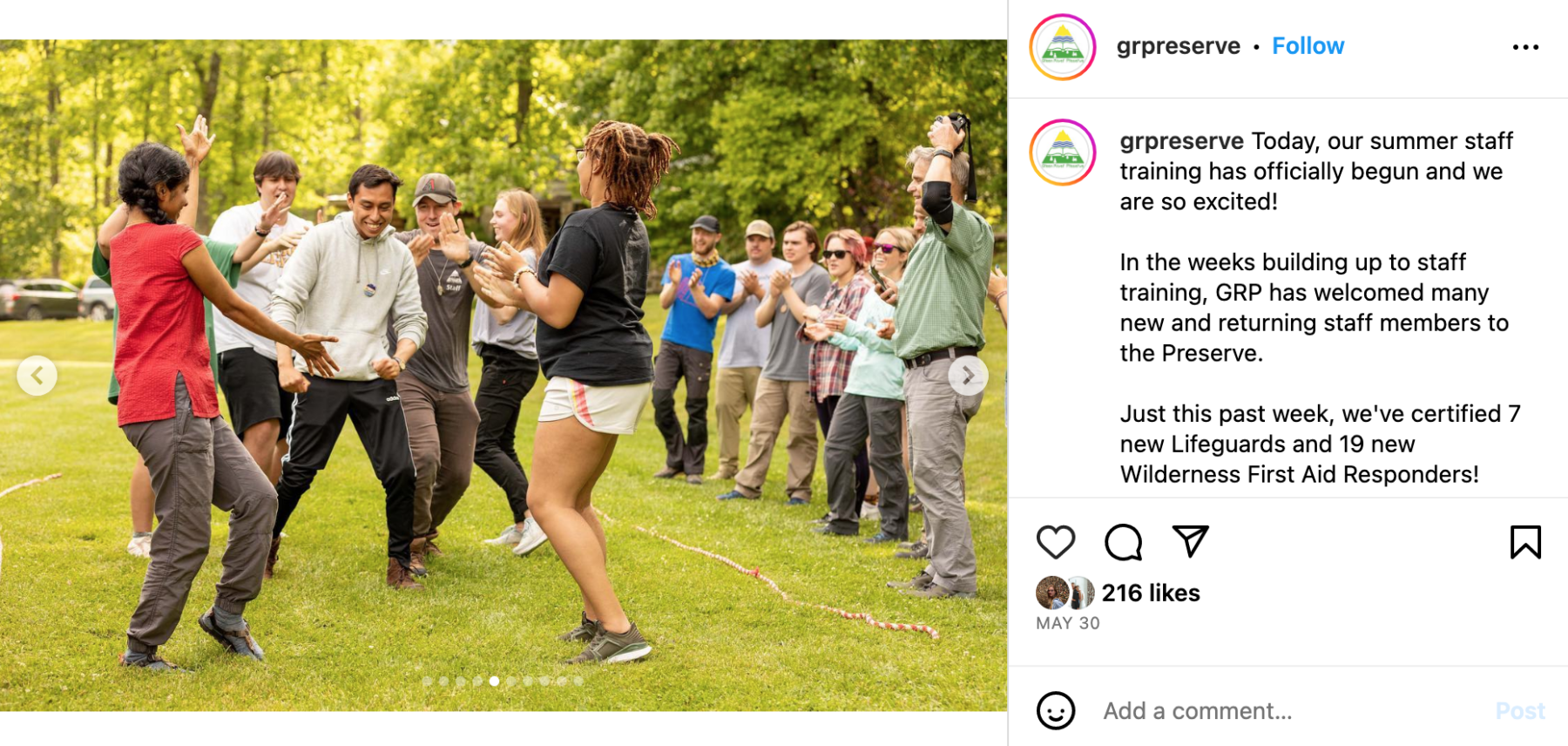As a nonprofit marketer, whether you’re attempting to persuade avid hikers to follow Leave No Trace Principles, prompt newsletter subscribers to sign a public lands petition, or convince local homeowners to install a rain barrel, encouraging pro-environmental behavior can be an uphill battle. Learn how to leverage social media marketing to your advantage.
Table of Contents
Nonprofit Marketer Social Media Tip #1: Choose Your Platforms Wisely
As a nonprofit, your time and resources are likely limited and you need to ensure you are directing your energy and resources to digital marketing channels that are the best fit for you and your audience, and then making sure you are maximizing those mediums. When it comes to the ever-expanding world of nonprofit social media, the choices can be especially overwhelming. Facebook, Instagram, Twitter, LinkedIn, TikTok, Snapchat…it feels like a new social platform for nonprofit marketers to consider and master is emerging every day.
The most important thing to ask yourself is, where is your target audience spending most of their time? You may already have an idea of this from your Google Analytics. For example, if a certain channel is already sending a ton of traffic to your site, that’s a good indication that your nonprofit should be on that channel, too. Otherwise, pay attention to your audience’s demographic data, and attempt to align it as closely as possible with the channels’.
Read the rest of our tips for deciding which social media marketing channel is right for your nonprofit. Plus, download a free social media calendar guide and template.
Nonprofit Marketer Social Media Tip #2: Tell a Story
Humans process information in two different ways. Processing through System 1 happens quickly, subconsciously, and automatically. Driven by emotion, System 1 is greatly influenced by biases and fallacies. Processing through System 2, on the other hand, happens slowly, consciously, and deliberately. Driven by logic, System 2 is largely dependent on working memory and general intelligence. Effective communication must target both systems and stories are a surefire way to target System 1.
Stories are also a great way to instill or reinforce social norms, or a perceived social pressure to perform a particular behavior. Social norms have been proven to have a significant influence on pro-environmental behavior. For example, researchers have used social norms to encourage hotel guests to reuse towels with signs that read, “A majority of guests reuse their towel.” Practitioners have also used social norms to encourage people to reduce their electricity usage by comparing their electricity usage to their neighbors’ electricity usage.

Nonprofit Marketer Social Media Tip #3: Show Don’t Tell
Social channels like Instagram are inherently “visual first.” The good news is nonprofit social media marketers can use visuals to capture their audiences’ attention, help viewers retain complex info, overcome potential language barriers, and help viewers visualize possible futures. Furthermore, unlike text, visuals are considered direct reflections of reality, meaning that viewers are likely to accept them as truth. Don’t just stick with photos though, infographics and maps are often a nonprofit marketer’s best friend.
- Infographics: Nonprofit marketers should use infographics to help viewers retain complex info. For example, you might create a graphic using a free resource like Canva showing what percentage of people already perform the pro-environmental behavior you are trying to instill or what percentage of people agree with the pro-environmental position you are trying to push. This may be especially effective as research shows that emphasizing “consensus” is a powerful way to encourage pro-environmental attitudes.
- Maps: A “psychological distance” often exists between people and environmental issues. For example, people often think that climate change will affect people living in other countries or states, but not people living in their own country or state. This is important because as this psychological distance increases, concern about environmental issues decreases. That’s why nonprofit social media marketers should use maps to emphasize the local relevance or effects of an issue
“Unlike text, visuals are considered direct reflections of reality, meaning that viewers are likely to accept them as truth.”
Nonprofit Marketer Social Media Tip #4: Take Advantage of Video
Like visuals, videos are considered direct reflections of reality, meaning that viewers are likely to accept them as truth. Videos are handy for influencing viewers’ emotions. Individuals experience emotions while watching videos in much the same way they experience emotions in real life. In fact, viewers may automatically synchronize their facial expressions, postures, or movements with those on screen, leading them to feel the same emotions, a phenomenon known as emotional contagion.
Luckily on social media these days, video is already king. Especially as platforms like Instagram attempt to compete with the popularity of video-first platforms like TikTok. And you don’t need a professional videographer to create a successful Instagram Reel or TikTok video. In fact, many Reels and TikToks are under 10 seconds and are created on a phone. Consider sharing behind-the-scenes clips, using trending sounds, or sharing short interviews.
Reels aren’t the only Instagram feature you should be using in your nonprofit social media marketing. Learn how your nonprofit could be leveraging Instagram Guides, “Add Reminder” buttons, and more.
Nonprofit Marketer Social Media Tip #5: Share Behind-the-Scenes Content
You’ve probably heard this advice before (and maybe you’re already heeding it), but sharing behind-the-scenes shots makes for more than just fun content. There’s actually a compelling psychological reason for sharing this kind of content. Let’s break it down.
There are four major types of trust: dispositional trust (or an individual’s inherent disposition to trust), rational trust (or trust in the outcome), affinitive trust (or trust of the trustee), and procedural trust (or trust in the procedures). By sharing what goes on behind the scenes of your operations, you have an opportunity to build affinitive and procedural trust with your audience!

Nonprofit Marketer Social Media Tip #6: Include a Call-to-Action
We talked in our last nonprofit marketing blog about how people who are highly motivated to think about an issue are more likely to elaborate on the issue and more likely to change their behavior as a result. On the other hand, those who are less motivated to think about an issue are less likely to elaborate on the issue, more susceptible to counterarguments, and less likely to change their behavior as a result. Experts call these two types of processing Central Route Processing and Peripheral Route Processing.
The good news for nonprofit marketers is that, with a little coaxing, people can jump from the peripheral route (leading to less behavior change) to the central route (leading to more behavior change). Without even realizing it, using social media to drive your audience to your website, a petition, your email sign-up, or a donation page is a classic example of pushing someone from the peripheral to the central route. Capture their attention with a compelling visual (see tip #3 above) before driving them to learn more elsewhere.
“People who are highly motivated to think about an issue are more likely to elaborate on the issue and more likely to change their behavior as a result.”
Nonprofit Marketer Social Media Tip #7: Make a Commitment
Making a commitment is effective because individuals want their beliefs and their behavior to be consistent. When an individual’s beliefs (represented by their commitment) are not consistent with their behavior, this creates cognitive dissonance. For example, consider using social media to direct your audience to some place they can commit to a pro-environmental behavior. In this example, individuals will attempt to reduce cognitive dissonance by following through on their commitment and adopting the pro-environmental behavior. But remember, in order to be most effective, commitments should be specific, voluntary, and be made public.
Capturing commitments isn’t the only trick up an effective nonprofit marketer’s sleeve. Learn what other nonprofit marketing tactics you should be leveraging and what nonprofit marketing mistakes you should be avoiding.
Our Nonprofit Marketing Services
The Darby Comm team has seen years of success with nonprofits of all sizes, manner of budgets, timelines, and needs. To learn how we can help your nonprofit garner impactful media coverage, enhance your social media or email marketing strategy, polish your public-facing copy, or otherwise engage your stakeholders, drop us a line HERE. You can also go HERE to learn more about our nonprofit services and successes.
